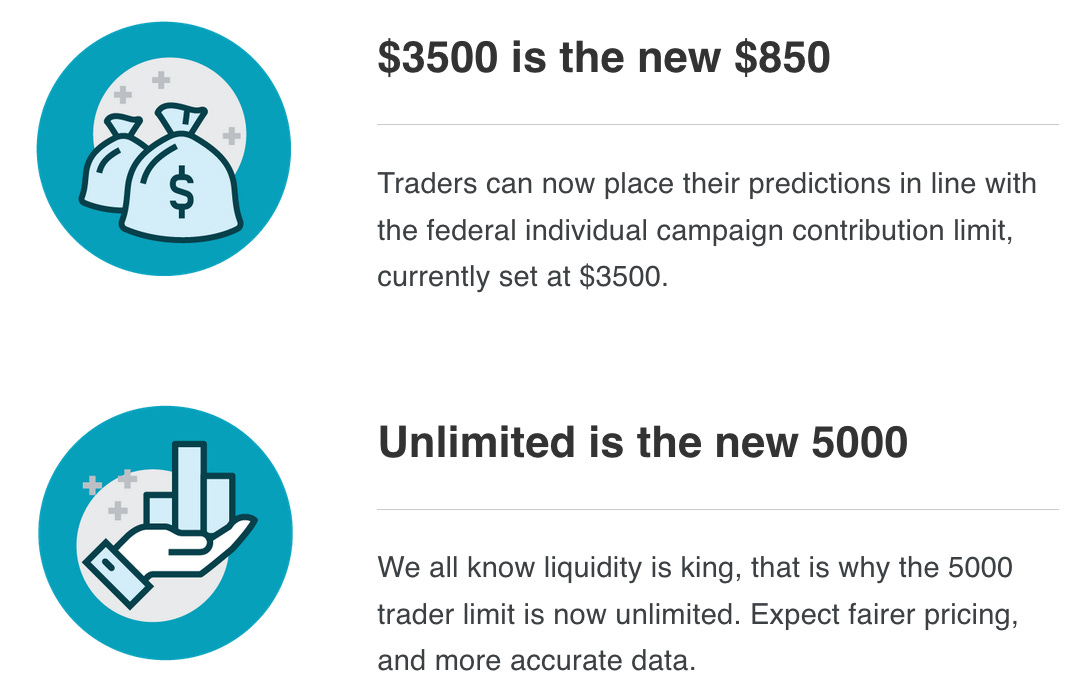PredictIt was the most active and widely referenced political prediction market in the United States for the seven years following its launch in 2015. Then came a clampdown by regulators, followed by two major new entrants, leaving the exchange diminished and hobbled. It continued to operate but with just a handful of contracts listed and significantly lower trading volume.
It now appears that the exchange has a new lease on life, having struck a deal with the Commodity Futures Trading Commission. In fact, some constraints that were in place at the outset have now been relaxed. The limit on a trader’s position size in any given contract has been raised to $3,500 from $850, and the constraint on the number of traders who can bet on a given event (previously 5,000) has been lifted entirely.1
Visitors to the site are now greeted with the following message:
We are pleased to announce the official relaunch of PredictIt, the pioneer in real-money political prediction markets, following renewed regulatory approval from Washington, DC.
This moment marks more than a comeback. It’s a reinvention. With strengthened compliance protocols and an unwavering commitment to excellence, PredictIt returns from its regulatory pause not just as a leader—but as the benchmark for what real-money prediction markets can and should be… We invite you to rejoin the conversation, engage with our revitalized platform, and rediscover the thrill of trading on what’s next in politics.
There are contracts on 25 distinct events currently listed, including on the outcomes of the midterm elections next year, and the major party nominations and presidential contest of 2028. Trading already appears to be quite brisk.
The sudden change in rules and the arrival of new participants can serve as a natural experiment for researchers interested in the manner in which prediction market design affects forecasting accuracy. There are two events for which contracts have been listed on PredictIt for weeks—the race for mayor in New York City and that for Governor in Virginia. Once these contests have been resolved in November, it will be possible to evaluate the relative forecasting accuracy of different exchanges both before and after the regulatory shock to PredictIt.
That is, we will be able to see whether the changes in design and participation made PredictIt more or less accurate relative to other markets (such as Kalshi or Polymarket) listing the same set of contracts. There are different ways in which this could be done, ranging from conventional measures such as Brier scores to the use of cross-market arbitrage or metrics based on trading outcomes.
Prediction markets are unique among online spaces in incentivizing contact between people who disagree sharply with each other about politics. If a market comes to be dominated by those who are convinced that a particular outcome is inevitable, prices will reach levels that attract people who are highly skeptical of this claim. In a polarized society with limited communication across echo chambers, such venues can be valuable. They can give us early warning signals for events that we can barely contemplate, and can challenge us to reconsider our convictions when prices move in unexpected directions. The power of persuasion and the marshaling of evidence are often weaker forces in shaking people free of false beliefs than the cold, hard prospect of monetary loss.


